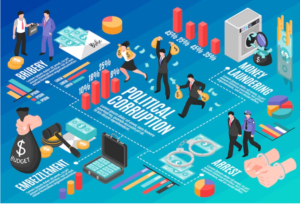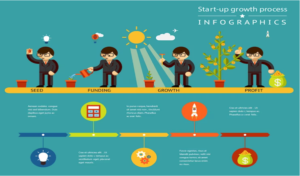Understanding the relationship between poverty and crime rates

Poverty and crime rates are two long-standing problems in the United States that are linked. As the richest country in the world, the USA should show its people how to live well and safely. But numbers show a harsh truth: poverty and crime hurt marginalised communities more than others. This has terrible effects on both individuals and society as a whole. Understanding the link between poverty and crime rates is important if we want to find long-term answers to these important problems.
First, let’s talk about what we mean when we talk about poverty and crime in the USA. People usually say that someone is poor if they don’t have enough money or resources to meet their basic wants, such as food, shelter, and medical care. About 10% of the people in the US live in poverty, which means that more than 34 million people live below the poverty line. Crime rates, on the other hand, are the number of crimes that happen in a certain time period. They are usually measured as a rate per 100,000 people. The FBI says that crime rates in the USA have gone down over the past few decades, but the country still has one of the highest rates of violent crime among wealthy countries.
Even though these numbers are scary, there is still hope for change. By knowing the complicated link between poverty and crime rates in the US, we can start to put in place policies and programmes that get to the root causes of these problems. So, let’s learn more about this topic and figure out how to make our neighbourhoods safer and more fair for everyone.
How to measure poverty and crime
Poverty and crime rates are two important parts of the United States’ social and economic makeup that go hand in hand. Poverty is when people don’t have access to the resources, chances, and basic things they need to meet their most basic needs. People often use income levels, household wealth, and access to schooling and health care to figure out if someone is poor. In the United States, the legal poverty line is set by the federal government. It is based on income thresholds that are changed to account for family size and inflation.
Crime rates, on the other hand, are the number of crimes that happen in a certain community over a certain amount of time. The rate of crime is measured by looking at data from law enforcement agencies and other places, like polls of crime victims and self-reported crimes. In the United States, crime numbers are broken down into categories like violent crimes (like murder and assault) and property crimes (like stealing and breaking and entering).
To make successful policies and programmes to deal with poverty and crime, it’s important to know how they are defined and measured. We can make a safer and more fair society for everyone by using correct data and strategies that are backed up by evidence.
The Link Between Poverty and Crime Rates
The link between poverty and crime rates is a complicated topic that has been studied a lot in the United States. Studies have shown that there is a link between poverty and crime rates, with more crime happening in areas where people are poor. Statistics show that crime rates, especially violent crime rates, are much higher in places with a lot of poverty.
There could be a lot of reasons why poverty and crime rates go together in the US. Some of the main things that lead to this relationship are a lack of opportunities, unequal access to schooling, and differences in income. For example, people who live in poverty often have less access to good schooling and jobs, which can make their finances worse and make them more likely to break the law. Income imbalance can also make people feel frustrated, angry, and desperate, which can lead to bad behaviour like committing crimes. Getting at the root reasons of poverty is important for lowering crime rates and making society more fair for everyone.
How being poor affects the number of crimes
Poverty has a big effect on crime numbers in the United States, and it affects different kinds of crime in different ways. Research shows that people who live in poverty are more likely to commit crimes than people who have a stable income. This is especially true for crimes like theft, drug offences, and dangerous crimes.
Theft is often linked to being poor, because people who are poor may take to meet their basic needs. Drug-related crimes are also more common in poor areas because people may use or sell drugs as a way to deal with the stress that comes with being poor. Lastly, violent crimes are often linked to poverty, because people who live in poor areas are more likely to be stressed out and angry, which can lead to violent behaviour.
Understanding how poverty affects different types of crime is important for getting to the root reasons of crime and making policies and programmes that work to lower crime rates. By putting money into education, job training, and social services, we can give people living in poverty more options and help cut down on crime in our neighbourhoods.
How Crime Makes People Poor
Crime affects people’s safety and well-being and the safety and well-being of their neighbourhoods. It also has a big economic effect on poverty in the USA. Criminal activity can make property values go down, which makes it harder for people who live in those places to get ahead financially and build wealth. Crime can also keep businesses from putting money into these places, which makes it harder for people to make a living there.
The economic effects of crime on poverty are especially bad for communities that are already poor and don’t have the means to rebuild and get back on their feet after criminal activity. This can lead to a circle of crime and poverty, where high crime rates make it harder for people to get out of poverty, and poverty makes crime rates go up. Getting rid of the economic effects of crime on poverty takes a multifaceted approach, such as investing in programmes to stop crime, create jobs, and improve communities. By getting to the bottom of crime and poverty, we can make our neighbourhoods safer and more prosperous for everyone.
Getting to the Bottom of Poverty and Crime in the U.S.
In order to deal with poverty and crime rates in the United States, it’s important to use a multi-pronged method that gets to the root of these problems. Some possible solutions include giving more people access to good schooling and job training programmes, making it easier for people in poor areas to get jobs, and putting money into community development projects.
Even though these methods might work, there might be things that make it hard to put them into place. For example, the loss of jobs due to automation and technology can be a problem. Privacy worries about data collection can also make it hard to put some programmes into place. Also, AI could be used for bad things, which could make current differences worse and create new threats to the safety and well-being of communities.
To deal with poverty and crime rates in the United States, we will need a comprehensive plan that takes each community’s wants and problems into account. We can make a more fair and just society for everyone if we all work together to find new answers and get past obstacles.
Conclusion
In the end, poverty and crime rates are closely linked problems that have a big effect on neighbourhoods all over the United States. Crime rates can go up when people are poor, which can make things even worse by reducing economic prospects and property values. Even though poverty and crime rates are hard problems to solve, there are things that can be done, such as spending in education, job training, and community development.
Poverty and crime rates are problems for society as a whole, not just for the people who live in them. To solve these problems, politicians, community leaders, and regular people all need to work together. By working together to address the causes of poverty and crime, we can make our neighbourhoods safer and more fair for everyone.
We can’t say enough about how important it is for the US to deal with poverty and crime rates. People’s safety and well-being aren’t the only things that are affected by these problems. They also have far-reaching effects on the economy and society as a whole. We can build a stronger and more fair society where everyone has access to the resources and chances they need to thrive if we do something about poverty and crime.
Read More You May Like:








